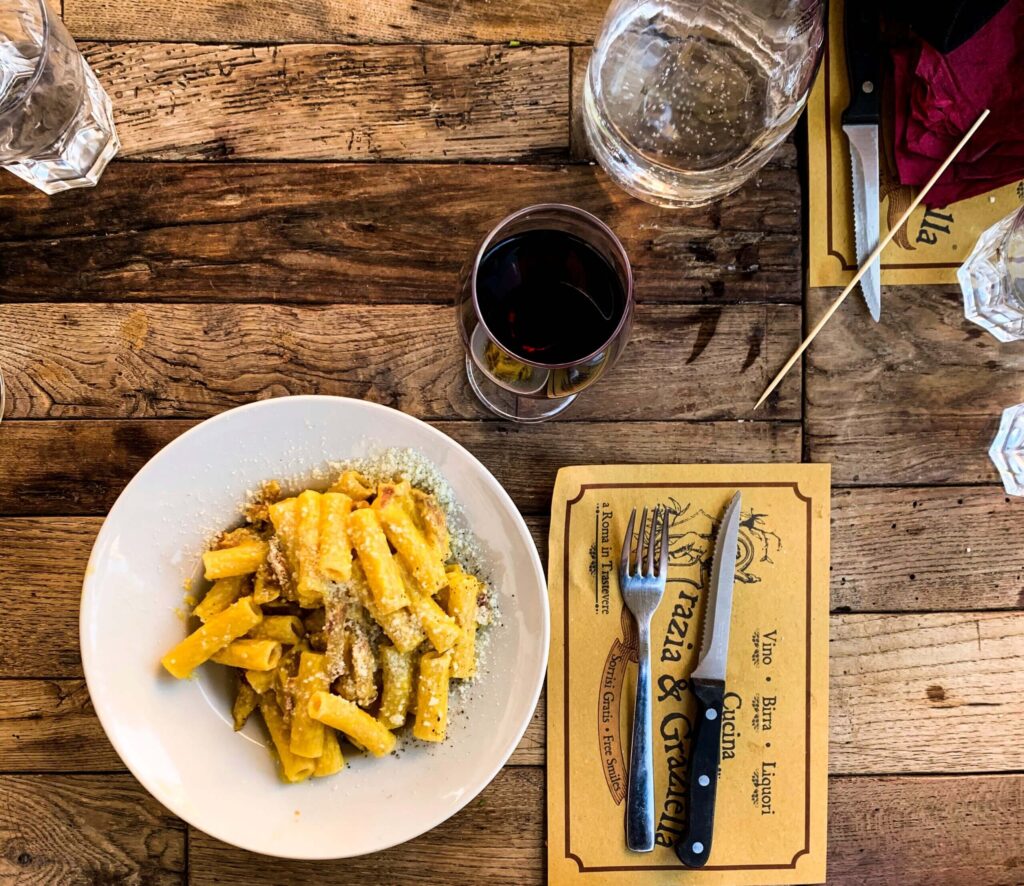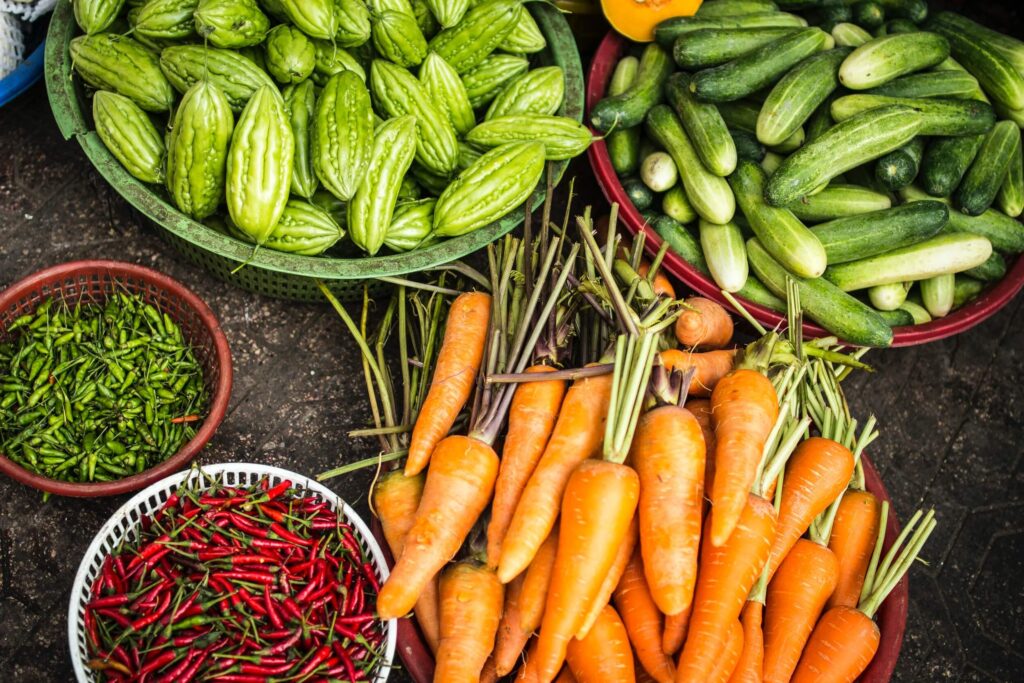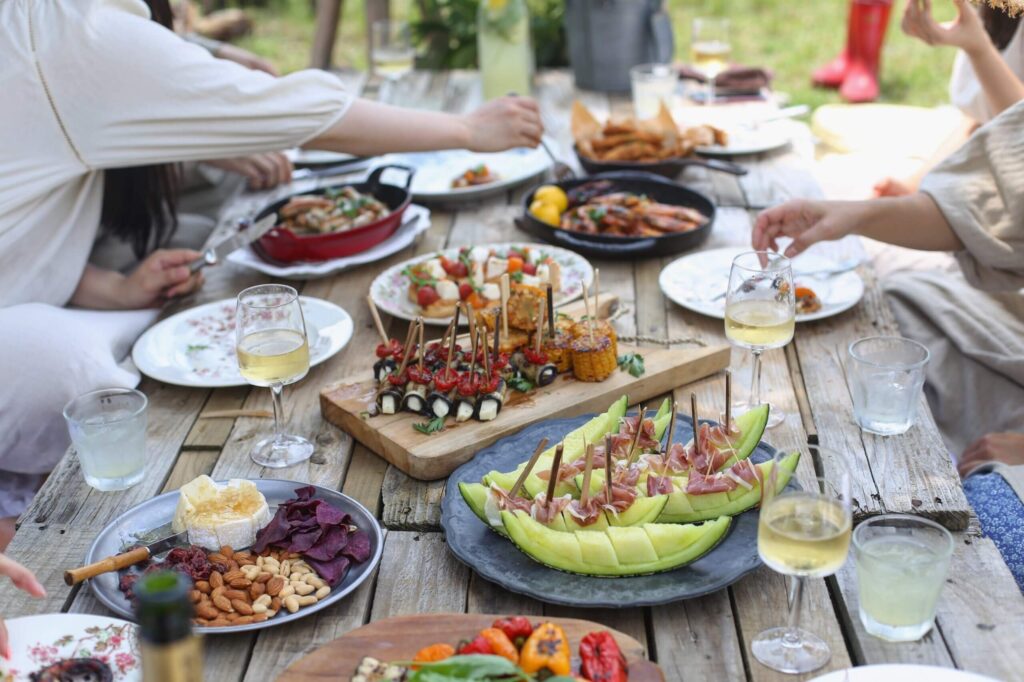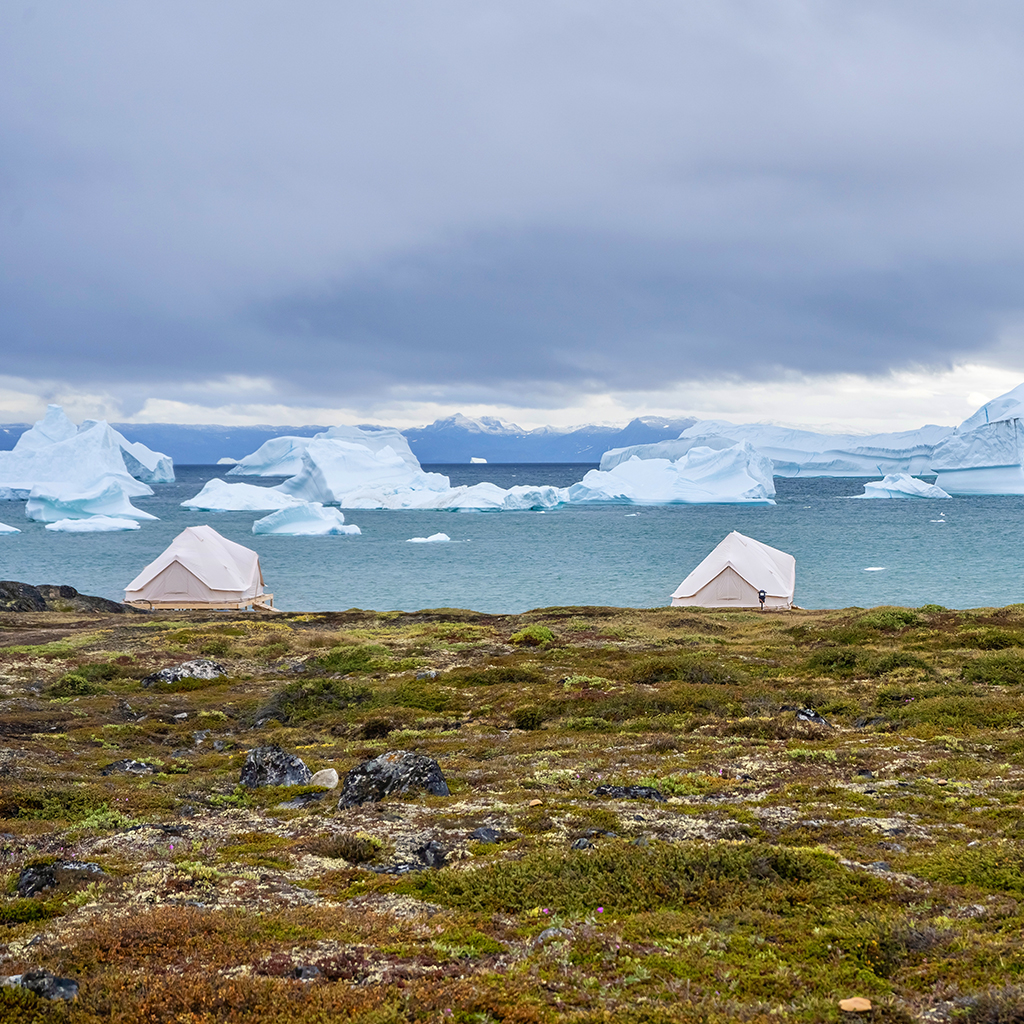
Picture yourself here:
You’re on the way out of a McDonald’s parking lot, craning your neck to look for oncoming rush hour traffic. Your hand creeps into the paper bag to sneak a couple of french fries that you won’t really taste as you pull onto the road.
Now, picture yourself here:
You’re gathered around a table in an unassuming brick-walled restaurant, catching up with friends as you dig into colorful seasonal vegetables, crackle apart fresh baked bread, and slice off a small but savory portion of ethically raised meat.
We’re not here to judge if you’ve been to drive-through (haven’t we all?) but we bet you’ll agree: that second scenario feels a lot better. It feels more responsible. Perhaps it even feels like a birthright.
Those feelings are exactly what the Slow Food movement is all about – and why Slow Food travel is the key to any cultural adventure!
Never heard of Slow Food? Let’s start with the basics.
What is the Slow Food Movement?
Slow Food is an international movement that seeks to slow down the process of growing, preparing, and enjoying food in our fast-paced world.
From humble beginnings in Italy in 1986 (when pasta was used for protest– more on that below) the movement has since grown to encompass over 1600 convivia, or chapters, across the globe.
According to the footer of its official website, it’s even funded by the European Union – talk about universal appeal!
The Slow Food movement is political, social, and (multi)cultural. It promotes:
- Preservation of regional and traditional cuisine.
- Sustainability through the use of locally sourced plant and animal products.
- Small businesses like family-run farms, food producers, and restaurants.
Why the Slow Food Movement Matters
An obvious clap-back to the fast food industry, the Slow Food movement isn’t just about the pace of food – it’s about the pace of life.
In the twentieth and twenty-first centuries, our world has industrialized at an astonishing rate. Progress that once took generations now takes a few years… or even months!
But the benefits of “progress” come at a cost: traditional ways of life and natural resources are disappearing.
And Slow Food advocates think the solution starts at the table.
The food we eat (and how we eat it!) has the power to…
- Protect culture, or eradicate it.
- Help heal the earth, or harm it.
- Deepen our friend and family relationships, or distract us from driving.
What is a Slow Food Diet?

There’s no single Slow Food diet. In fact, (unlike the McDonald’s menu) it’s never the same! The Slow Food diet available to you depends on these three connected factors:
- Location: Where in the world are you?
- Tradition: What culture does the food come from, and what is its legacy?
- Season: What’s growing this time of year? What weather conditions in this particular year have affected the growing season?
Enjoying a Slow Food diet means connecting to cultural roots, prioritizing human connection, and nourishing your body with fresh foods you can feel good about.
The Slow Food diet pairs especially well with travel. The ethos of Slow Food is what makes experiential travel (like one of our Yoga Adventures) more than just tourism.
Origins of the Slow Food Movement
The idea of Slow Food was born at a 1986 protest in Rome, Italy. That’s also where the term “Slow Food” was coined.
Three years later, the Slow Food Manifesto was signed by representatives from 15 countries in Paris, France.
Carlo Petrini and the McDonald’s Protest
In 1986, a scandalous proposition was put forth in Rome: a McDonald’s was to be constructed near the Spanish Steps.
You’re probably not surprised to learn that the locals did not take kindly to the idea. Protestors gathered at the proposed site with picket signs.
One man, a journalist named Carlo Petrini, brought something more: a whole lot of penne pasta. With the help of his friends, he passed it out to fellow protesters and bystanders.
Their slogan was simple:
“We don’t want fast food, we want slow food!”
Unfortunately, it was too late to stop this particular McDonald’s from taking root in the heart of Rome. But something much bigger was just beginning.
The Slow Food Manifesto
In 1989, Petrini assembled a group of foodies from 15 countries in Paris, France. Together, they signed the Slow Food Manifesto, a document that guides the Slow Food movement to this day and, in the words of Time Magazine, “changed the way we think about eating.”
Or perhaps it prevented the way we think about eating from changing more than it already had.
The Slow Food Manifesto is a short but potent document that has the power to move anyone who loves culture. Skeptical? Here’s a sample:
“In the name of productivity, Fast Life has changed our way of being and threatens our environment and our landscapes. So Slow Food is now the only truly progressive answer. That is what real culture is all about: developing taste rather than demeaning it.”
Read the full Slow Food Manifesto here.
Slow Food Travel: Make the Most of Every Adventure

In case you couldn’t quite put your finger on why food is such an important part of travel, Slow Food makes it crystal clear. Food represents our cultural and ecological heritage.
Cuisine deserves to be cherished and celebrated, and the best way to get to know a new place is by experiencing authentic local food. (This is also why traditional yoga retreats with restrictive diets miss out on opportunities to experience local culture!)
On all of our Yoga Adventures, you’ll partake in Slow Food. You’ll venture out with locals to open-air markets, tour traditional agricultural operations, gather around the table for hyper-local dining experiences both rustic and refined, and even cook some of these meals yourself.
For example…
- In Sri Lanka, you’ll pause mid-bike-ride to join a local family for home-cooked rice and curry. Later, you’ll skip the big plantations to tour a family-run, artisanal tea estate (with plenty of time for a tasting!)
- In Cartegena, Columbia, a local chef will open up their kitchen to you and teach you how to prepare dishes and drinks from traditional ingredients.
- You’ll linger over lunch on a veranda in Kenya, savoring local fare while allowing plenty of time to watch animals meander over the nearby hillside.
But the adventure that takes the (Slow Food) cake is our Italy Yoga Adventure. Focused on food, wine, and traditional living in the less-touristed Piedmont region, it’s just the kind of slow travel that the Slow Food Manifesto calls us to embark on.
After all, Carlo Petrini is from Piedmont, so it’s arguably the true birthplace of the Slow Food movement!
In Italy, you’ll spend hours each day celebrating food and culture, and all the ways they intertwine.
You’ll learn about the elusive white truffle, stroll through hazelnut farms, and savor plates of agnolotti di plin. You’ll emerge calm, content, and with a deep sense of what makes traditional cuisines worth fighting for.
[Slow Food Adventure in Italy]
Even after your Slow Food travels, you might find yourself grabbing fast food in a pinch sometimes – we can’t always escape the pace of modern life, after all!
But in the back of your mind, you’ll be planning a weekend dinner of seasonal ingredients from the farmers market, or a trip to a locally-sourced restaurant. And you’ll know that these small actions that make you feel so alive will help keep your culture alive, too.

